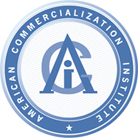 |
High Paying
US Jobs, Economic
Empowerment
&
Revitalization
of
States through Federal Power |
"Critical Field"
Technology Innovation
&
Maximized Profits on
R&D and Investments |
Prevention of Biochemical
and Nuclear Proliferation
&
Homeland Security
Technologies |
Permanent & Painless Non-Surgical
Spinal Cord & Back Pain Treatment
For the
first time ever, a procedure for spinal disks cartilage regeneration and back
pain elimination is available through a friendly, bloodless laser treatment
procedure for patients with spinal instability and back pain. This procedure
replaces the invasive complicated, painful and dangerous spinal surgery that is
the only treatment available today.
Clinical
trials successfully performed on over 30 human patients with spinal disk
instability and back pain. 15 of the patients were in late stages of disk
degeneration and hernia with the pulp of the spinal disk pushing out. All
patients became pain free and the cartilage in the damaged spinal disks has
successfully regenerated, filled the holes and stabilized the spine. MRI
tomography and contrast x-rays show the successful regeneration. Clinical
Observation performed for about 1 year. No post-treatment complications and/or
visible side effects were observed.
Problems
of the musculoskeletal system affect more than 44-million Americans. There are
over 5 million people in the U.S. with varying degrees of chronic back pain.
Back pain is the No. 1 reason for doctor's office visits in the United States.
Spine Surgery is the top 3rd reason for hospitalization in the US. In the past
decade, the average costs of a spine surgery have increased by 97% from $7457 to
$19,712. In 1998 1,360,531 spinal surgeries were performed worldwide and 816,000
(60%) of those procedures were performed in the US. At least $16 billion each
year is spent on low back pain in the U.S.
Benefits
over traditional surgery - No surgical incisions (no pain, scars, blood, No
muscle transection or dissection, No blood loss, No scars , No hospital stay, No
postoperative pain, The anatomy is left in a natural state, No loss of
ambulatory functions, No risks or complications (morbidity) associated with
traditional surgery, No risks or complications associated with traditional
fusion surgery
The
procedure of heating the spinal disk with a laser takes approximately twenty
minutes to complete. A needle of 1 mm in diameter pierces the skin of the
patient and a non-ablative laser (less then 158° Fahrenheit) heats the nucleus
of the spinal disk. The procedure is extremely safe and relatively painless. The
technology is based on over ten years of research.
